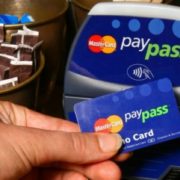Financial ruin – a slippery slope
In the past week I have heard of three separate stories that, because of past decisions, have had a profoundly negative outcome for each of the people involved.
I like to talk about personal financial well being and the need for each of us, irrespective of our age or circumstances, to live a financially responsible life.
Let me relate one of the stories in the hope there are lessons we can take from it – if not for ourselves, perhaps for our family or friends. I don’t profess to have all the answers!
The story relates to a couple in their early 20s. This couple are renting, have two leased cars, a heap of credit card debt, no savings, and have a baby on the way. Their financial situation is such that they are behind with their repayments and are facing a very tough time financially.
The man in the relationship has a job that pays a salary of around $70,000 per annum. His pregnant partner is not working and she is unable to get Centrelink income support benefits, because of his income.
One question I asked was whether they could get by with just one car? The answer I was given was ‘no, because she is pregnant’.
I know very little about this family or their lifestyle but by all accounts, things appear to be quite dire. I was asked if this couple could access their superannuation in order to get themselves back on track financially.
In certain circumstances superannuation can be accessed in cases of severe financial hardship, and on compassionate grounds, however the rules around access are very prescriptive. Sadly, in this case, their personal circumstances would not allow early access to super.
Apart from this couple getting really serious about tackling their debt, financial ruin and even personal bankruptcy, could be a very real outcome.
I suggested they probably need to start looking at their lifestyle, objectively reviewing all their expenses and commitments, then prepare, and stick to a realistic budget that will ensure they live within their current means, and progressively repay their debts.
I also suggested that a phone call to the National Debt Helpline might be worth considering. Details can be found at ndh.org.au. This is a free service. Sometimes we just need to swallow our pride and ask for help.
Source: Peter Kelly | Centrepoint Alliance


